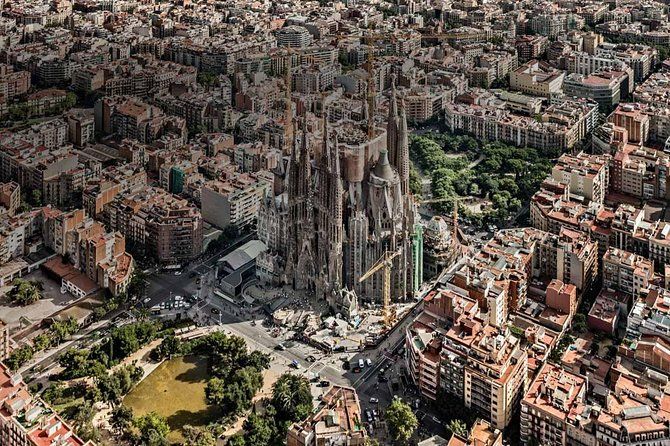Discover Barcelona: Travel Insights, Cultural Knowledge, and Local Advice Explained
Barcelona, located on Spain’s northeastern Mediterranean coast, is one of Europe’s most visited and culturally vibrant cities. As the capital of Catalonia, it stands out for its architectural landmarks, maritime heritage, and artistic identity. The city’s prominence developed over centuries through trade, industry, and culture.
Today, Barcelona represents a blend of historic charm and modern life — where medieval streets meet contemporary urban planning. It attracts millions of visitors yearly who come to experience its culture, art, food, and seaside lifestyle. Exploring the city offers valuable insight into how a historic European destination manages global tourism, sustainability, and local well-being.

Importance
Barcelona’s significance extends beyond tourism. It illustrates how cities balance tradition with modern challenges such as sustainability, housing, and cultural preservation.
Key reasons why it matters today:
-
Global tourism hub: Millions of travellers arrive annually, making Barcelona one of the leading destinations in Europe. This contributes to local economies and global travel trends.
-
Cultural and architectural heritage: Landmarks like the Sagrada Familia, Park Güell, and the Gothic Quarter symbolize creativity and historical depth.
-
Urban and social relevance: The city reflects issues faced by many global destinations — including managing crowds, protecting heritage, and improving urban life for residents.
-
Learning opportunity: Understanding Barcelona helps travellers engage respectfully with local culture and helps students, researchers, and planners study how tourism coexists with everyday life.
For locals, this context affects quality of life and urban policy. For visitors, it provides awareness and appreciation beyond sightseeing.
Recent Updates
Barcelona continues to evolve socially, economically, and environmentally. Several developments in 2024–2025 highlight its dynamic character.
-
Managing overtourism: The city government has begun reducing the number of cruise terminals and limiting daily passenger capacity to ease overcrowding in popular zones.
-
Urban renewal: Major investments have been made in renovating dozens of neighbourhoods, improving pavements, lighting, and accessibility to create more inclusive public spaces.
-
New transport regulations: E-scooter riders are now required to wear helmets and are restricted from using pavements, with penalties for violations. These changes reflect efforts to improve pedestrian safety.
-
Visitor behaviour awareness: Tourists are reminded to respect dress codes outside beach zones, book attractions in advance, and avoid noise disturbances in residential areas.
-
Public sentiment and protests: Local demonstrations have drawn attention to housing pressure, short-term rentals, and crowding. These movements aim to promote sustainable tourism and protect community life.
-
Tourism recovery: Following pandemic-related restrictions, visitor numbers have returned to record levels in 2025, showing strong interest in the city but also raising the need for balanced visitor management.
Overall, these updates show Barcelona’s shift toward a more sustainable and regulated tourism model that respects both residents and visitors.
Laws or Policies
Barcelona operates under both local Catalonian and national Spanish regulations. Understanding these helps travellers stay informed and respectful.
Transport and mobility
-
E-scooters and bicycles must follow specific traffic rules, avoiding pavements and adhering to speed limits.
-
Low-emission zones restrict older vehicles from entering central areas to reduce pollution.
-
Public transport options — metro, bus, and tram — are supported by integrated ticket systems for ease of travel.
Tourism and accommodation
-
Short-term tourist rentals require proper licensing to operate legally. Unregistered rentals can lead to fines for owners and visitors.
-
Staying in licensed accommodations ensures compliance with local regulations and supports fair tourism practices.
-
Excessive noise, public drinking, or inappropriate dress away from beaches may result in penalties.
Public safety
-
Demonstrations occasionally occur in central areas, and visitors are advised to remain aware of public gatherings.
-
Barcelona enforces general safety regulations similar to most European cities, focusing on crime prevention, crowd control, and emergency response.
Entry and travel
-
Travellers entering Spain for tourism currently face no pandemic-related restrictions.
-
Future visa-waiver travellers to Europe are expected to register through the ETIAS system once implemented.
These frameworks reflect Barcelona’s commitment to maintaining order, promoting sustainable tourism, and protecting residents’ well-being.
Tools and Resources
Exploring Barcelona effectively involves using practical tools that support planning, mobility, and cultural understanding.
Official and informational resources
-
The Barcelona City Council and tourism board websites provide maps, cultural event listings, and safety information.
-
Local newspapers and regional information platforms share daily updates and community events.
Navigation and public transport apps
-
The TMB App provides real-time information for metro, bus, and tram routes.
-
Digital tools like Google Maps and Citymapper assist in planning walking, cycling, and public-transport routes.
-
Bike-sharing and electric scooter apps allow flexible short-distance travel in compliance with city regulations.
Travel organization tools
-
Online platforms for museum and attraction reservations help reduce queue times.
-
Accommodation verification tools help confirm whether a property is registered under local law.
-
City guides and digital itineraries allow visitors to plan routes through cultural districts like El Born or Montjuïc efficiently.
Safety and communication
-
The emergency number in Spain is 112, which connects to police, fire, and medical services.
-
Many embassies recommend registering travel details and downloading local safety-alert apps.
-
Language tools and translation apps are helpful for communicating in Catalan or Spanish, especially in smaller neighbourhoods.
Using these resources improves the experience of exploring Barcelona responsibly and efficiently.
Frequently Asked Questions
Q: Do I need a visa to visit Barcelona?
A: Entry requirements depend on nationality. Citizens of the European Union can travel freely within Spain. Travellers from many other countries can visit for up to 90 days without a visa under the Schengen Agreement. The ETIAS authorization system is expected to be introduced for some visitors in the near future.
Q: Is Barcelona safe for tourists?
A: Barcelona is generally safe, but like any major city, visitors should remain cautious of pickpocketing in busy areas such as markets, metro stations, and tourist landmarks. Staying alert, securing belongings, and avoiding carrying large sums of cash are sensible precautions.
Q: What is the best time to visit Barcelona?
A: Spring (April–May) and early autumn (September–October) usually offer comfortable weather and fewer crowds than the peak summer months. Visiting outside the high-tourism season allows more authentic experiences in neighbourhoods and attractions.
Q: What local rules should I follow as a visitor?
A: Avoid wearing swimwear or going shirtless outside beaches, follow public-transport etiquette, dispose of waste responsibly, and respect local quiet hours at night. Booking accommodations through licensed hosts ensures compliance with city policies.
Q: How can I move around Barcelona easily?
A: The metro system is one of the most efficient ways to travel, covering most urban and suburban zones. Walking or cycling is ideal for exploring central districts. Public-transport passes are available for unlimited use over certain days, and taxis and ride-share services operate under city regulation.
Q: What cultural etiquette should I know?
A: Greetings such as “hola” or “buenos días” are polite and appreciated. Locals often eat later than in many countries — lunch after 1:30 pm and dinner after 8:30 pm. Respect for local customs, quiet behaviour in residential areas, and courtesy in public spaces contribute to a positive exchange between visitors and residents.
Illustrative Overview: Barcelona Visitor Focus (2025)
| Category | Insight (2025 Trend) |
|---|---|
| Annual Visitors | Over 17 million in early 2025, continuing to rise |
| Key Focus Areas | Sustainable tourism, housing balance, cultural preservation |
| Urban Development | 30+ neighbourhoods undergoing renovation |
| Common Visitor Interests | Architecture, gastronomy, beaches, local markets |
| Major Regulations | E-scooter rules, short-term rental licensing, noise control |
This table summarizes Barcelona’s ongoing efforts to balance tourism growth with social and environmental sustainability.
Conclusion
Barcelona continues to stand as one of Europe’s most fascinating cities — a place where artistic heritage, modern life, and community values coexist. Understanding its background helps explain why millions of people are drawn to it each year. Its current policies and updates show a growing focus on sustainability, urban renewal, and respect for local residents.
By learning about the city’s laws, updates, and available tools, visitors can travel more consciously and engage with Barcelona in a meaningful way. Whether exploring Gaudí’s architecture, enjoying seaside walks, or studying its cultural dynamics, informed awareness ensures that the experience is respectful, enriching, and aligned with the spirit of the city itself.






